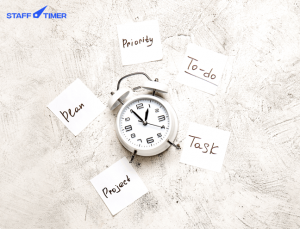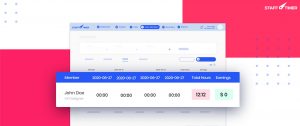How to Track Project Budget Accurately and Effortlessly
Budgets are really hard to estimate sometimes. Even if you have created a complete Project budget plan you still have to make sure it stays within the bracket and in order to do that, keeping track of your project’s budget is crucial. Without which it can become difficult for you to ensure whether your team is spending just the right amount of resources on tasks and priorities or not.
Come up with a realistic budget plan
The first step in tracking your project budget accurately is to come up with a realistic budget before your projects begin. Figure out not just how much you’ll need overall, but also when and where you will need the bulk of your money. This includes creating a schedule with deadlines for different parts of the project.
In order to keep track of the spending, you may opt to have one person sign off on all expenses, or you might prefer to have different people overseeing different parts. Whichever you choose, make sure that this is clear to both you and your team. Then have a central area where all costs are recorded so that you can monitor your projected budget against your actual needs. This will let you course-correct when necessary and nip budget problems in the bud before they get out of hand.
– Nate Masterson, CEO @ Maple Holistics
Time is Money
Don’t forget that your budget is also a timeline. It estimates how long you’ll need to successfully complete the project. This is because time is money. When a project takes longer than estimated, you’re going to spend more money than you planned, so pay attention to how your timeline is progressing and update according to the data.
– Chane Steiner, CEO @ Crediful
Use Budget Tracking Apps and Softwares
There are a lot of project budget tracking apps and software out there currently and are continuously evolving. They allow multiple team members to check-in and indicate what has been done and hasn’t to see if you’re keeping in time with the projected budget and timeline.
Remember, if you go over the deadline, you will likely go over the budget. The great thing about it is that these types of software can catch issues as they happen that can throw you off budget—if a mini-portion of the project hasn’t been finished in the time that’s been allotted, it serves as a warning signal that you may fall behind.
There are hundreds out there currently, but I would recommend one that allows for a smartphone app, mostly because it can help track on the go. Many team members work remotely or off-site or have to run in and out of important meetings for the project, instead of them having to remember to check in and check off the portions they did that day at the end of the day (which they may or may not do/remember), they can do it as each task is completed. This ensures that the timeline is kept as well.
– Jake Lizarraga Writer @ Finance Fox
Keep all your data both physically & online
In addition to using automated software to track project budget, you should keep all the project’s receipts in a special place, both physically and online. It’s always good to keep track of all receipts in case the software breaks or you get questions from others in the company or the IRS. Then you can pull out your physical and online receipts to verify and show proof of what you have spent the project’s money on.
– Stacy Caprio, Founder @ Growth Marketing
Leave room for unforeseen circumstances
Leave room in the budget for unforeseen circumstances. In many cases, projects tend to go over their initial budget. If you set aside a portion of your initial budget for unmarked costs, you will have some wiggle room in case they ever arise—if no unmarked costs occur, you will be able to finish the project under budget.
– Chris Terschluse, Head of Marketing and Content @ chimebank
Standard spreadsheet V/S Automation tool
Overseeing a project budget is a huge responsibility. It includes the coordinating costs and managing risk and making sure the rate at which your organization spends this budget. You can choose two options for tracking your budget, i.e., standard spreadsheet or Automation tool.
Using a spreadsheet tool like Office Excel to enter and edit numbers is the standard, manual approach to budget tracking. If you have the time, it’s the cheaper option, but there is always a chance for human error there.
Another way to handle cost management and budget tracking is by using an automated tool. You can break down the budget spend by individual tasks, project phases, and even from the employee end. For extensive projects and payments, there’s also the option to track recurring budgets.
– Aqsa Tabassam, Senior Growth Marketer @ Brandnic
The budgeting project accurately requires attention to details because one small mistake can lead to a much bigger and unresolvable issue later in the project.
Some more tips to track project budget accurately and effortlessly:
- Make sure to plan ahead of your project. The more time you have on hand before the project starts is a great sign to show that you are actually working on it.
- The overall project might look complicated at first, but when you create a baseline, you identify what to include in the project or the proposal itself.
- Forecast the budget before the start. This means that you can actually outline the financial that will be used for the project and the results that it will provide. This is forecasting is important.
- Monitor the schedule that it will take on each task in the project. Scheduling is easy when you know, how of the project.
- Understand the vision of the project and implement it with style according to the financials included in the forecasting.
– Adeel Shabir, Content Marketing Executive @ GigWorker
See how Staff Timer can Help Manage Your Project Budget
Staff Timer can help manage your project budget by keeping track of employee work hours. The app efficiently keeps track of daily, weekly, and monthly employee hours.
Let’s say your company requires at least seven hours daily from its employees. This means every employee needs to fulfill his/her quota for the month. If some employees are not putting in enough hours for the month, its safe to assume that they are not giving it their best shot. These types of employees will drag the whole project down. They will most likely waste the resources and budget allocated to the project.
Here’s how you can sign up for Staff Timer:
- Go to the signup page by clicking here.
- Fill in the required fields and press ‘Start Free Trial’.
- Check your email and verify your account.
- Go to the app and create your company.
- Add your project.
- Invite team members.
- Ask team members to download the app in order to start time tracking.
With Staff Timer app, employers can first check employees’ track records before assigning them to an important project. If their record is impeccable then they can safely assume that their project and its budget are in good hands.
Employers can easily check their employees’ track record by going through their weekly and monthly reports. Incidentally, they can also watch employees’ daily work videos to know how they complete their tasks and whether or not they’re a good fit for a certain project.
Staff Timer app also takes a screenshot after every minute or so. This is another way through which employers can gauge their employees’ suitability for different types of projects and thus allocate the budget accordingly.






